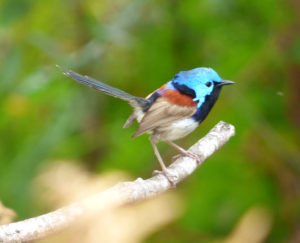
Our natural assets – the stunning Tomaree National Park, our unique marine and coastal environments as well as the dozens of native bushland reserves – are the primary reason residents and visitors alike are attracted to Port Stephens. All these ecosystems require care and attention to maintain healthy, biodiverse environments. While the NSW Government attends to national parks and marine precincts, many of the bushland reserves are the responsibility of Port Stephens Council.
This is a huge undertaking covering around 1000 hectares. There are some 80 bushland reserves, from large ones like the Karuah biobank reserve (260 hectares), Stoney Ridge Reserve in Salamander Bay and the Mambo Wanda Wetlands, to small reserves like Everitt Park and Sandpiper Reserve in Soldiers Point.
The NSW Local Government Act requires Plans of Management (PoM) for these reserves. However only four reserves have site-specific PoMs – Mambo (2006), Boomerang Park and two Aboriginal Declared Places. All other reserves are within the general Port Stephens Council PoM.
Countless hardworking landcare volunteers, alongside Council officers, spend many hours in these reserves, undertaking regeneration and revegetation work in difficult conditions to weed, trim, plant and water. But ecological restoration also requires funding – and Council funds are limited.

So how does Council prioritise the allocation of funds? Which sites are most in need and why, and how much should be invested? The answers have been sought through the development of the Bushland Assessment Tool, a unique assessment methodology to assist in the prioritisation of work in Council’s bushland reserves.
The Bushland Assessment Tool (BAT) was developed by Council’s Natural Resources Management (NRM) Department led by team leader Jordan Skinner in partnership with external ecological and computer programming consultants.
‘It identifies sites according to conservation significance,” said Jordan. ‘It measures site condition including changes in condition in response to interventions, and then ranks sites for prioritising funding and for assisting community volunteers direct their efforts. It also takes into consideration the new Biodiversity Conservation Legislation and other assessment methods.’
Five contracted botanists and ecologists have assessed 80 reserves since 2018, with more than 270 individual assessments comprising 50 questions for each.The focus has been on:
- Conservation significance – ecological attributes including flora, fauna and vegetation communities.
- Condition monitoring – establishing baseline data on the existing condition of all sites to ensure Council’s return on investment in the form of vegetation condition improvement can be monitored and quantified, and is consistent with Council expectations.
- Investment prioritisation – assessing and ranking all areas based on conservation significance, threats, history, opportunity for improvement and condition, and then prioritising investment (including sourcing new funding opportunities).
In assessing reserves, factors considered include: connectivity, size, shape and resilience to human impacts such as weeds and dumping. Jordan explains that ‘all this data is a positive way of demonstrating to officers responsible for allocating funding the need and the progress of work achieved by staff and volunteers. The results will also be shared with the community so it can understand how funding is allocated.’ To help standardise the results, it is recommended that next year’s round two employs one contractor do all assessments.
The Bushland Assessment Tool provides a factually-based, accountable and transparent tool to prioritise funding. The Council NRM team should be congratulated on their initiative and implementation. Possibly the tool could be extended to include the importance of respective reserves in a social and tourism approach, but that is outside of the scope of the NRM team.

A typical rehabilitated shrub layer offering protection and shelter to foraging variegated wrens. Photo: Sue Olsson
Nelson Bay West Landcare members removing agapanthus and other garden escapees and weeds from the Bridle Path Bush Reserve. Photo: Betsy Hussin
Useful Links:
